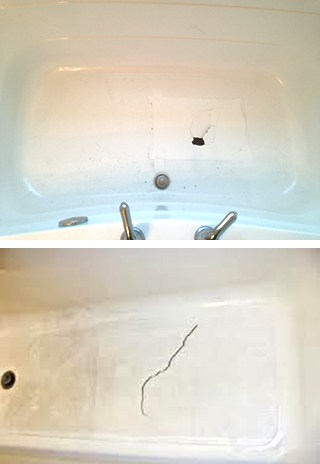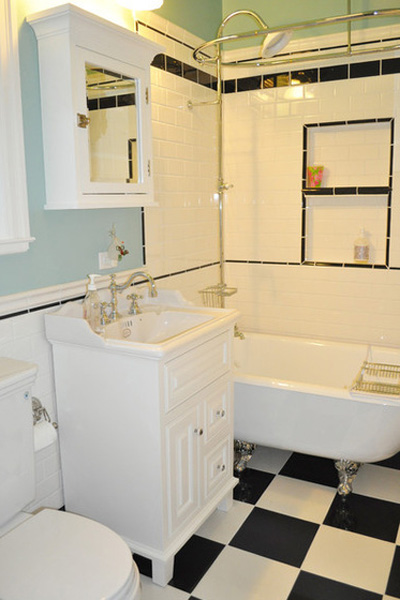{Visit Link The publisher is making several great points relating to 6 Things to Know About When Hiring a Plumbing Services as a whole in this article followed below. We recommend that you clean your acrylic bathing product made of Delta ProCrylic or Acrylic with Innovex Technology with non-abrasive soaps and cleaners, such as: When it’s time to clean, always use a terry cloth towel, soft cloth or sponge to avoid scratching the acrylic surface. Don’t use abrasive scrubbing pads, steel wool or sponges, cause permanent damage to the acrylic material. If you use a drain cleaner or clog remover, be sure to rinse thoroughly with water so no product is left standing near the drain. Some chemicals and cleaners may deteriorate acrylic surfaces, causing cracks and, potentially, property damage. To avoid this, don’t use cleaning products that state on their label that they are not suitable for use on Acrylic, ABS, Polystyrene or Plastic. Be sure to check the label of any product before you apply it to the surface; it’s easier to avoid damage than to try to remedy it. Chemicals we do not recommend using to clean acrylic showers/tubs: When you’re ready to apply sealant, a little planning goes a long way. Pick up some painter’s tape and use it to mask off the seam to help make cleaning up easier. When you’re applying the bead, use a constant, steady speed to avoid an uneven finish. Use a caulk tool or a plastic spoon to work the sealant into the joint. Wetting the tool with denatured alcohol will help create a smooth finish. Follow the directions on the back of the tube for cure time. Certain chemicals and cleaners may deteriorate acrylic surfaces, causing cracks and, potentially, property damage. After you’re finished applying it, clean up the product surface and remove any excess sealant with denatured alcohol. Don’t use solvents (turpentine, lacquer thinner, mineral spirits, paint thinner, MEK, xylene, acetone, naphtha, etc.) that can wreak havoc on an acrylic surface. With a little care and consideration, you can prevent damage to your acrylic shower or tub. Keep a supply of soft cloths handy and remove any damaging products or abrasive scrubbing items from the bathroom to ensure they aren’t around when it’s time to clean. https://www.deltafaucet.com/design-innovation/inspiredliving/how-to-clean-acrylic-shower Do you appreciate more info about Hiring a Plumbing Company? Place a remark below. We would be pleased to see your suggestions about this entry. In hopes to see you back again in the future. Sharing is nice. Helping people is fun. I am grateful for your time. Visit us again soon.
Acrylic bathrooms, shower trays, and also various other acrylic restroom ware have become a lot more common in shower rooms in current times. Not as sophisticated and also resilient as enamel and also porcelain bathrooms and components, they are much more inexpensive as well as offer rather a lot the very same basic objective. Some typical instances of damage to acrylic bathroom components include discoloration, cracks, holes, etc.Damaged shower or bath surface area
Acrylic bathroom components are not abrasion-resistant like enamel selections. They are a lot more susceptible to scrapes and much less long lasting. Being an extremely soft material, acrylic scratches can even be concealed without coating or filling. For these, you ought to look for professional help for your bath repair services. As an avoidance suggestion, avoid using rough sponges when cleaning. Rather, you should make use of a straightforward fluid cleaner with a soft pad.Chemical Reactions
In some cases, people attempt to repaint the whole surface of their acrylic bath by themselves either due to the fact that they do not such as the color to conceal imperfections. You should never ever make use of paint remover on acrylic bathrooms. Paint removers do not react with the surface area of metal baths, they destroy acrylic baths irreversibly.Bathroom Discoloration
With extended use of acrylic bathrooms comes discoloration or staining. While some spots can be eliminated conveniently, making use of special chemicals, others require that the bathroom be resprayed. Aromatherapy oils loosen the dirt in some cases consequently recovering the bathroom to its previous splendor.Broken Polymer Baths
The life expectancy of acrylic as well as fiberglass baths is up to 15-20 years for shower pans as well as bathrooms, usually. Fractures in an acrylic shower tray are most likely amongst the most convenient troubles to fix for a repair specialist. This is the same for PVC, resin, and other such products.
Acrylic bathrooms, shower trays, and also various other acrylic washroom ware have actually come to be a lot more typical in shower rooms in recent times. You ought to never make use of paint eliminator on acrylic baths. Paint removers do not respond with the surface area of metal bathrooms, they ruin acrylic baths irreversibly. With long term use of acrylic bathrooms comes discoloration or discoloration. The life expectancy of acrylic and fiberglass bathrooms is up to 15-20 years for shower frying pans and bathrooms, typically.How to clean Acrylic shower
USE THESE NON-ABRASIVE CLEANERS
DO NOT USE THESE CLEANERS
Sealant Application Tips

Book Service
5 Acrylic Shower Room Troubles and also Solutions
Call